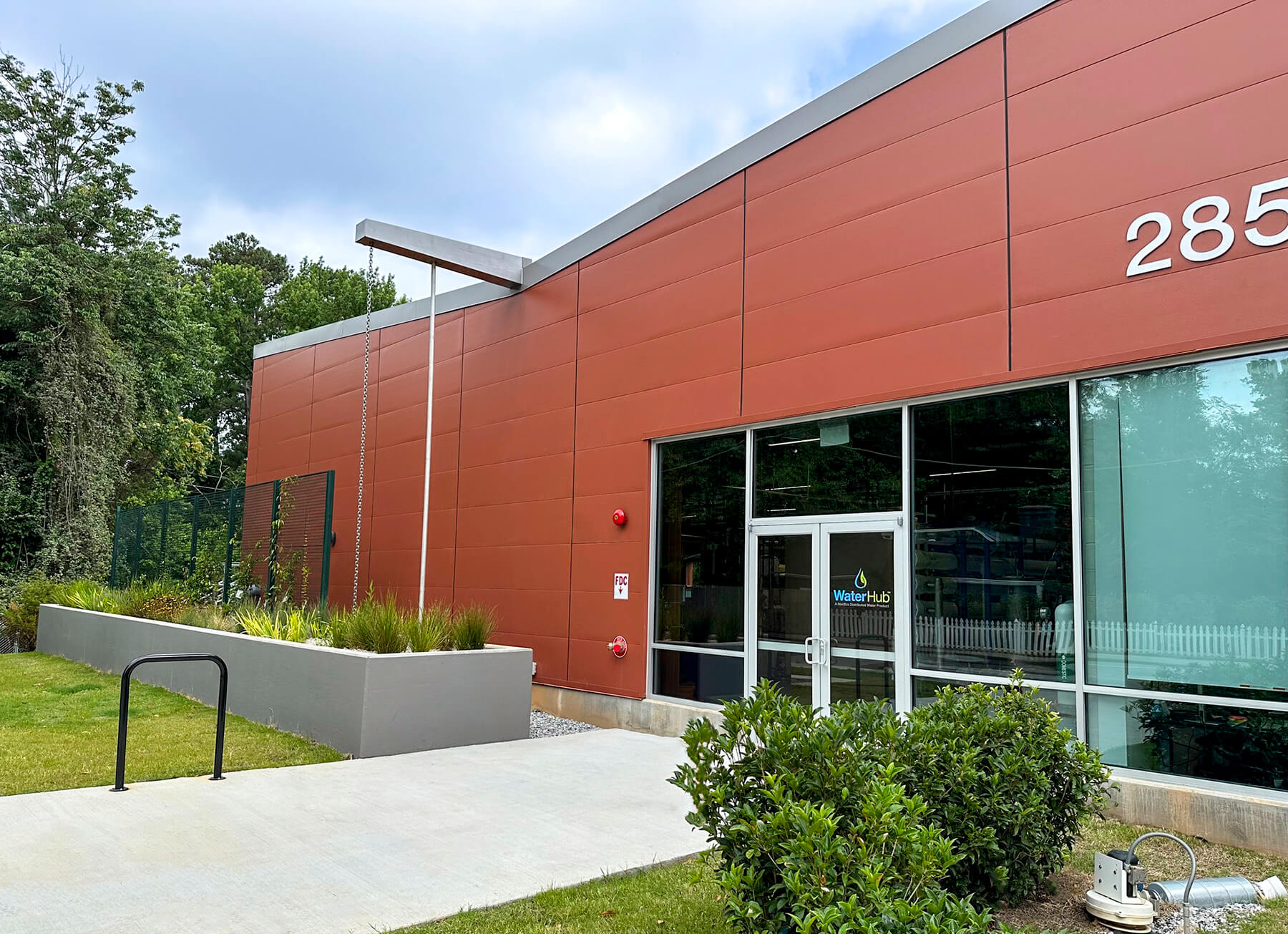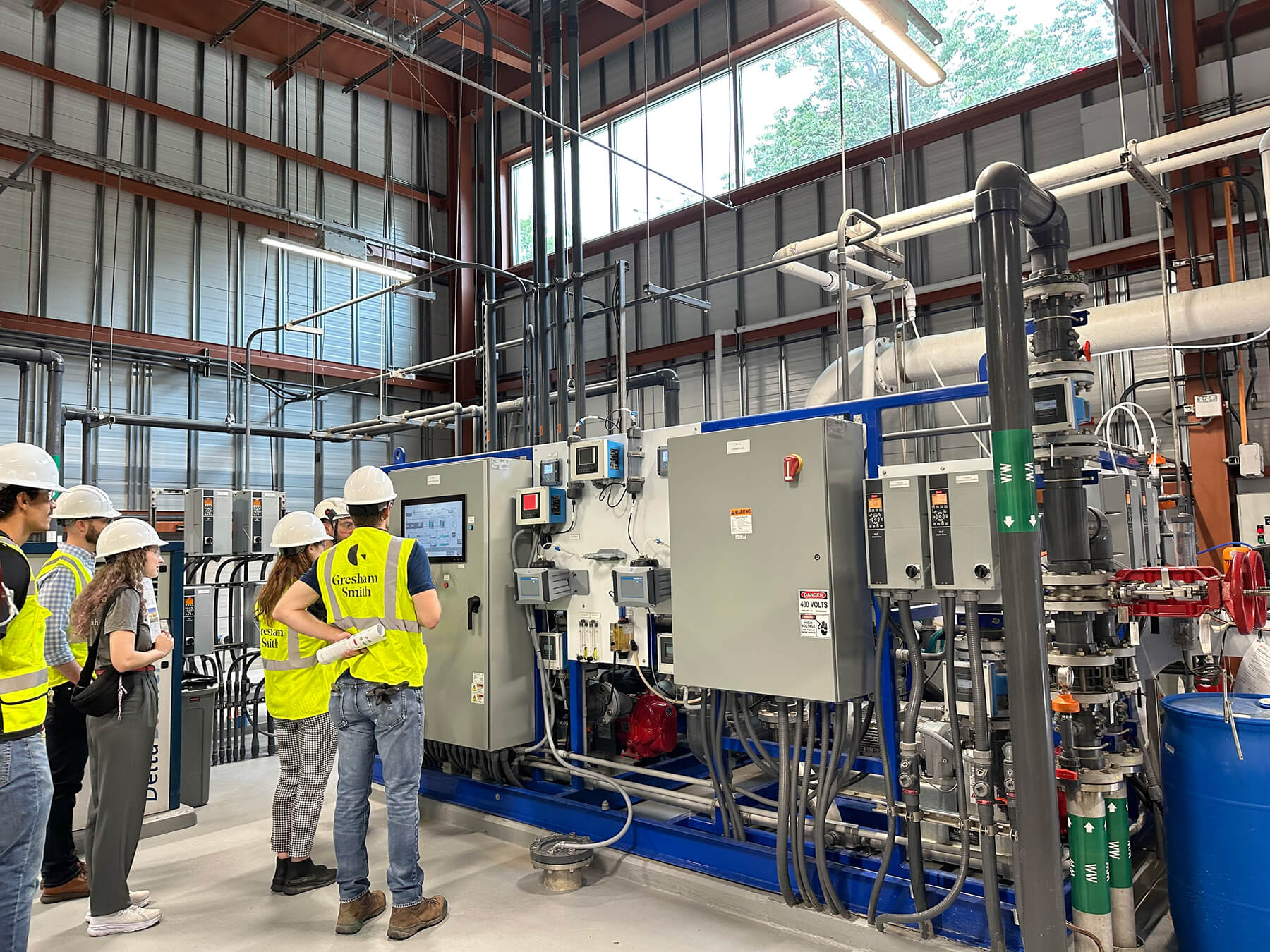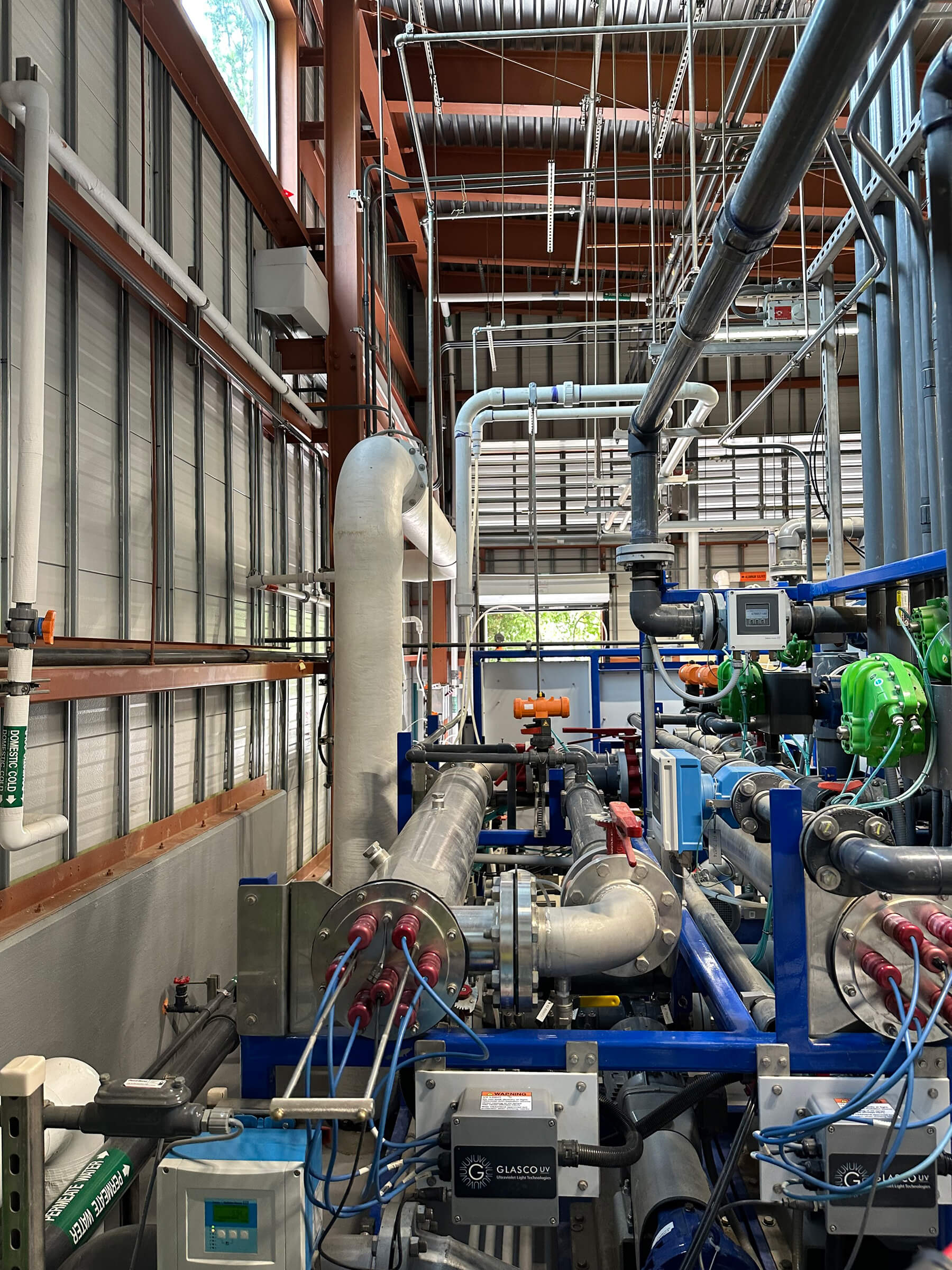Data-Driven Design
During the preliminary design phase of the project, Gresham Smith worked to characterize the hospital’s wastewater and model the treatment process to confirm treatability. This was particularly challenging, as data was limited due to atypical hospital flows during COVID. However, after sampling influent wastewater at three locations and modeling using BioWin model, the team was able to optimize the treatment process to meet the hospital’s unique needs and blend the system seamlessly with the campus’ existing water infrastructure. Additionally, we analyzed the hospital’s cooling tower and boiler consumption, as well as daily use patterns, to optimize the hydraulic system to meet demands.

A Complex Permitting Process
During the permitting process, we worked with the City of Atlanta Department of Watershed Management to illustrate the project’s impact on the overall collection system and coordinate how the existing sewer line would be modified to accommodate the facility. Gresham Smith also worked with the Office of Watershed Protection, the health department, fire marshal, city arborist and neighborhood planning department.
Treatment Plant Tetris
The facility’s compact, approximately 4,000-square-foot footprint required creative space planning. The design team had to arrange all of the process equipment—including influent screening, 12 chemical feed systems, a reverse osmosis system, two odor control systems, two sets of blowers, the membrane equipment skid, and the CIP system skid—on one level, while also leaving ample space for operators to conduct regular monitoring and maintenance.


Inspired Architecture
Throughout the design process, our team aimed to create an aesthetically pleasing building that’s not only cohesive with the other structures on Piedmont Atlanta Hospital’s campus, but also reflects the innovation inside. The terracotta colored exterior panels and large windows speak to the hospital’s existing architecture, while the butterfly-shaped roof is symbolic of the building’s function, funneling rainwater to a central rain chain and stormwater collection area. Additionally, a vegetation wall for vining plants creatively conceals piping and tanks, while a concrete planter along the street front enhances aesthetics while also routing water to underground tanks.
Small Space, Big Savings
After the initial startup in early 2023, the facility is now reducing the hospital’s potable water consumption by 49%, saving an estimated 75 million gallons of water annually. Additionally, the facility will reduce wastewater discharge to the public sewer system by 55% and reduce the fuel used for the hospital’s boilers by approximately 25%.